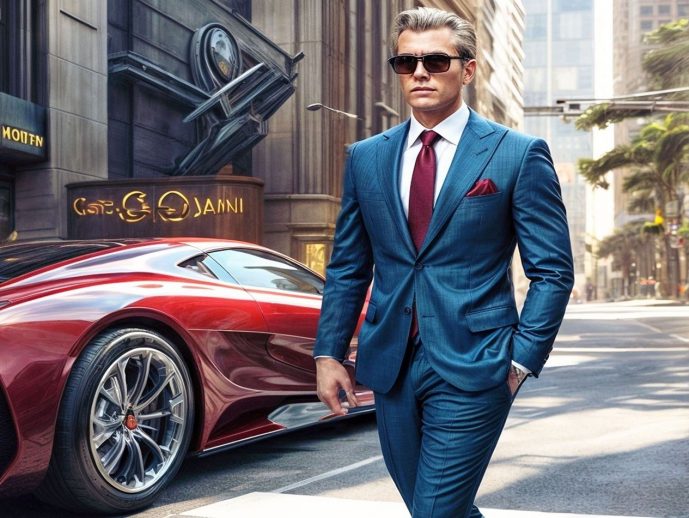Categories more
- Adventures (16)
- Arts / Collectables (14)
- Automotive (36)
- Aviation (10)
- Bath, Body, & Health (73)
- Children (6)
- Cigars / Spirits (30)
- Cuisine (16)
- Design/Architecture (17)
- Electronics (12)
- Entertainment (4)
- Event Planning (3)
- Fashion (42)
- Finance (8)
- Gifts / Misc (6)
- Home Decor (44)
- Jewelry (39)
- Pets (3)
- Philanthropy (1)
- Real Estate (12)
- Services (21)
- Sports / Golf (14)
- Vacation / Travel (60)
- Watches / Pens (14)
- Wines / Vines (24)
- Yachting / Boating (15)
The Influence of Cultural Trends on Luxury Trading
Published
10/14/2024In recent years, the luxury trading market has evolved significantly, driven by changing cultural trends that redefine consumer expectations and values. These trends influence what is considered desirable and valuable while reshaping luxury perception and consumption. Consequently, brands are adapting their strategies to align with these shifts, integrating sustainability, personalization, and digital engagement into their offerings. But how are these cultural trends transforming the luxury trading landscape?
Let's explore the impact of cultural trends on luxury trading.
Sustainability: The Growing Importance of Ethical and Social Responsibility
In the luxury trading market, sustainability has emerged as a pivotal cultural trend that brands can no longer ignore. Consumers are increasingly prioritizing ethical and socially responsible practices, demanding transparency and accountability from luxury brands.
This shift is compelling companies to leverage trading strategies that incorporate sustainable practices, such as using ethically sourced materials and reducing carbon footprints. By focusing on social responsibility, brands enhance their appeal to conscientious consumers who seek to align their purchasing decisions with their values. Moreover, integrating sustainability into luxury trading is not just a moral choice but a strategic one, offering a competitive edge in an ever-evolving market.
Personalization: Customizing the Luxury Shopping Experience
Personalization has become a critical cultural trend in luxury trading, with consumers seeking unique and exclusive experiences. This trend has been fueled by advancements in technology, allowing brands to gather and analyze data on consumer preferences and behavior. Armed with this information, companies can create highly personalized products and services that cater to individualistic desires.
For instance, luxury fashion brands like Gucci offer bespoke tailoring services where customers can design their own clothing pieces. Additionally, personalization extends beyond product customization to the entire shopping experience, including tailored recommendations and curated VIP events for high-spending clients.
Digital Engagement: The Shift Towards Online Luxury Trading
With the increasing pervasiveness of technology in our daily lives, luxury trading has also seen a significant shift towards digital channels. Online sales have been steadily rising in the luxury market, with brands investing heavily in their e-commerce capabilities to meet the growing demand for digital shopping experiences.
Additionally, social media platforms like Instagram and WeChat have become essential tools for luxury brands to engage with consumers and showcase their products. Through these virtual channels, companies can reach a wider audience and create interactive experiences that heighten brand awareness, ultimately driving sales.
AI and Augmented Reality: Enhancing the Luxury Shopping Experience
Advancements in artificial intelligence (AI) and augmented reality (AR) have further revolutionized the luxury shopping experience. AI-powered chatbots can provide personalized recommendations, assist with product searches, and even handle customer service inquiries.
On the other hand, AR technology enables customers to virtually try on products, view them in different settings, and even customize them in real-time. This not only makes for a more immersive and interactive shopping experience but also helps bridge the gap between physical and online retail.
Wear Tech: The Fusion of Fashion and Technology
Another emerging trend in the luxury industry is the incorporation of wearable technology into fashion, which is transforming the way consumers perceive and engage with luxury items. High-end brands are increasingly integrating advanced technologies such as fitness tracking, smartwatches, and biometric sensors into their products, resulting in a seamless blend of style and functionality.
This trend reflects a broader shift in consumer preferences, as affluent individuals seek out products that not only exude elegance but also enhance their health and well-being. Luxury wearables can track various health metrics, offer personalized fitness insights, and even connect to other smart devices, allowing users to maintain a sophisticated lifestyle while prioritizing wellness.
As a result, this innovation not only meets the demands of a tech-savvy clientele but also positions luxury brands at the forefront of the wellness movement, catering to the sophisticated tastes of modern consumers who value both aesthetics and functionality.
Conclusion
The luxury industry has always been synonymous with exclusivity, craftsmanship, and tradition. However, as technology continues to shape the modern world, it is also transforming the way we perceive and experience luxury. From personalized online shopping experiences to wearable technology, the integration of tech in the luxury market is not only meeting consumer demands but also opening up new opportunities for growth and innovation.
As a result, luxury brands must embrace these advancements to stay relevant and appeal to a new generation of affluent consumers who value both traditional luxury and cutting-edge technology. The future of fashion may very well be at the intersection of style and technology, where creativity meets functionality to provide a truly elevated luxury experience.















